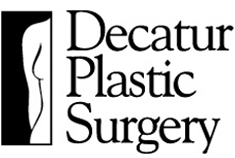
256-340-5188
1206 Somerville Rd
Decatur, AL 35603

256-340-5188
1206 Somerville Rd
Decatur, AL 35603
Breast surgery of all types is one of my main interests and working with breast implants is one of my specialties. After my regular plastic surgery training, I did an extra year of plastic surgery fellowship training in Nashville with Dr. Patrick Maxwell and Dr. Jack Fisher, both world-renown breast surgeons.
Silicone Implants
All of my plastic surgery training occurred between 1990 and 1993 during the silicone implant controversy and I started my private practice in 1993 caring for many, many women with troublesome silicone implants. Because of my experiences at that time have not used silicone implants except for a select few reconstructive cases where they had some benefits. Silicone implant shell integrity is hard to follow on physical exam and the condition of the implants cannot be evaluated with a mammogram. It is very difficult to tell if silicone implants are leaking. The only way to tell if a silicone implant is intact is to obtain an MRI scan. The FDA recommends that women with silicone implants have an MRI scan 3 years after implantation and then every 2 years after that. The out-of-pocket costs for a lifetime of MRI exams would be a tremendous financial burden to women who have implants placed for cosmetic reasons. During my years of practice, when consulting with women about their silicone implants, I have been shocked to learn that most women were unaware of the need for obtaining routine MRI scans to monitor their implants.
I have a webpage dedicated to leaking silicone implants and that can be found by Tapping Here
Saline Implants
In my practice, I use saline-filled implants because if they leak, the body absorbs the saline and that solution is perfectly safe. Of course, the breast goes flat and it is a nuisance to have to replace the deflated implant, but unlike a leaking silicone implant, at least we know that is has leaked and there is no risk. The implant company's warranty, for an implant that has leaked, includes being given a free replacement implant for life. They also have an extra warranty program, for a fee, that adds monetary reimbursement to offset the costs of going to the operating room to change out the deflated implant.
Implants and/or Breasts Too Large
I take care of a lot of patients who are unhappy with their breasts because the implants they had inserted in the past, by other surgeons, are too large. It is often difficult for a patient and a surgeon to communicate exactly what size the patient is trying to achieve. So occasionally a patient can end up being too large. This issue can be about self-confidence, they think they appear too large. Or it can be physical, their breasts fell heavy. You have to realize that saline and silicone fill weighs 1 gram per 1 cc. So if you have a 500cc implant in your breast, that weights 500 grams plus the weight of the shell. Converting grams to pounds means that you have a 1.1 pound implant in each breast! I also see patients that were augmented when they were young and thin, and as they have aged and had pregnancies their native breast tissue enlarged. Now they are too large and no longer need the volume of their implants because they have enough volume in their breast tissue alone. In both of these situations, either the implant is too big, or the breast tissue volume has increased, the patients need their breasts adjusted. In most cases the implants need to be removed, a partial or complete capsule removal performed and a breast lifting procedure added. Sometimes and exchange to a smaller implant can be down without other breast adjustments.
Implant Shell Surface Types
Saline implant shell surfaces come in two styles, one is a smooth-walled surface, the other is a textured surface. Various types of texturing have been developed through time in an attempt to decrease the risk of developing scar tissue around the implant which can alter the shape and make the implant feel hard. This scarring process is called capsular contracture. There is some scientific basis for the concept of textured surfaces and decreasing the risk of contracture. During my training, I did laboratory research involving the study of textured implants and the risk of capsular contracture. Textured surfaces may be especially important when doing breast reconstruction with tissue expanders and Dr. Maxwell, who I trained with, was a researcher for this concept and developed the Bio-Dimensional System of breast tissue expander reconstruction.
Unfortunately, recently there is a new controversy with breast implants. This new controversy applies to saline and silicone implants because the controversy is about the surface style of the implant, not what fills the implant. Over the past decade, a new disease has been identified related to the biologic covering, the capsule, around an implant. The new disease is a type of large cell lymphoma. The full name is Breast Implant-Associated Anaplastic Large Cell Lymphoma or BIA-ALCL.
I have a webpage dedicated to this issue and that can be found by Tapping Here
© 2005 - 2020 Gordon M. Telepun, MD
Providing care to patients in Decatur, Huntsville, Madison, Hartselle, Florence, Muscle Shoals
Photographs May Not Be Reproduced, Written Text and Descriptions are Copyrighted and May Not Be Reproduced